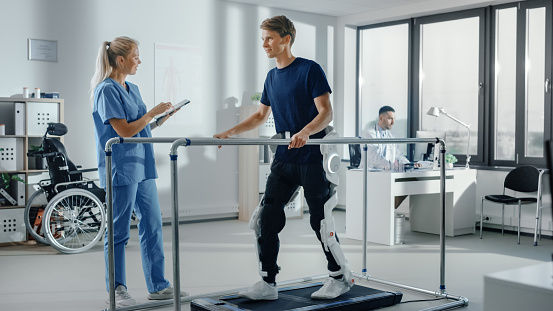
Orthotics and prosthetics are specialized healthcare professions that use materials science, engineering and health care to create devices that help patients with disabling conditions of the limbs and spine. They help individuals achieve mobility, independence and participation in work, education, social life and recreation.
The orthotic and prosthetic companies Philadelphia profession (often referred to as O&P) is a dynamic and evolving field that addresses a wide variety of acute and chronic conditions affecting quality-of-life, community participation and mobility. O&P professionals provide individualized treatment to their clients that is based on movement sciences, clinical assessment, material design and behavioral sciences.
Prosthetists and surgical prosthetic equipment are responsible for designing, creating, fitting and evaluating artificial limbs and devices to improve the physical functions of people who have lost a limb due to accident or disease. Their job is to ensure that the device fits and performs as intended and that it does not cause further injury or discomfort.
They may also be responsible for assisting with the training of people who are getting their first prosthetic limb or aids to help them feel more comfortable using it. They work in hospital and clinic settings as well as rehabilitation centers.
Both the orthotic and prosthetics professions require excellent communication skills to interact with patients, caregivers and other medical professionals, as well as good maths and practical skills to fabricate and adjust the devices. They are also trained in assessing the physical and psychosocial needs of their patients and are able to collaborate with the patient’s other therapists to develop a holistic treatment plan.
Depending on the level of the patient’s need, it is necessary to cast the limb or body part in order to make a custom-designed and fabricated device for that area. This is especially true in prosthetics, where a ‘negative’ cast of the missing limb must be made in order to make the ‘positive’ design for the prosthesis.
A variety of techniques are available for creating a cast, including manual or mechanical methods. The technology has advanced and made it possible to do more precise, quicker and cheaper measurements than ever before.
These casts are then sent to the manufacturer of the device for fabrication. They are typically finished within a matter of weeks, depending on the complexity of the design.
They are then fitted to the patient’s limb, and the resulting device can be used to assist with daily tasks and activities. Some of the more technologically advanced devices are equipped with microprocessors that can control and interface with nerves to increase motor control, and can also be designed with Bluetooth technology to connect with the mobile phone to facilitate communication with the device.
The orthotic and prosthetics program at CSUDH provides students with extensive hands-on training in a simulated clinical setting that mimics the real-world practice of caring for patients from evaluation to delivery while under the direct supervision of our experienced faculty. In addition, our faculty are actively engaged in research and contribute to a global community of clinicians, educators and researchers who are dedicated to the advancement of the field. To know more about prosthetics, visit this website at https://www.dictionary.com/browse/prosthetic.